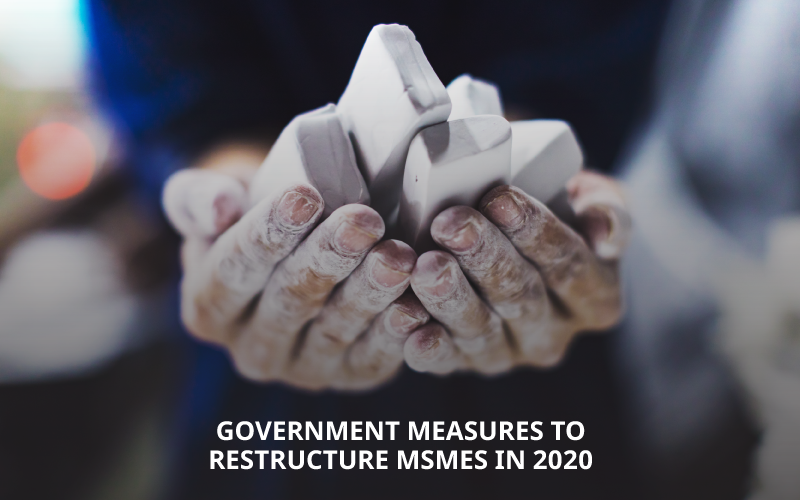The Government’s vision for 2020 is simple; ensure that the MSME sector contributes to at least $2 trillion to the economy.
To make this happen, the Government introduced measures to restructure MSMEs that find it difficult in the already uncertain economy.
Government Targets to Restructure MSMEs for:
- Technological advancement
- Skills development
- Increased employment opportunities
Measures to restructure MSMEs
Stressed MSMEs will not be declared as NPAs:
Recently, Finance Minister Nirmala Sitharaman made an official statement that stressed MSMEs can be restructured without being declared as Non-Performing Assets (NPA).
According to Sitharaman, MSMEs get additional term loans and liquidity through their working capital requirement.
“ Your small business loan and finances are sorted through any public sector bank between Dec 7 and January 7. “ Nirmala Sitharaman, Finance Minister
Also, the Government has formed an Infrastructure task force that will invest around INR 1 lakh crore to help restructure MSMEs and deploy these funds for the next 5 years across the industry.
This move also helps fund incomplete housing projects started by MSMEs.
Stressed Asset Fund for MSMEs:
Due to the FM’s decision to not declare stressed MSMEs as NPAs, the Government has set up a 5000 crore stressed asset fund for domestic MSMEs. This way, the small business will have funds to sustain business and avail credit when needed.
Also, a Government-sponsored Fund of Funds (FoF) is set up to support crowdfunding from Venture capital and private equity firms in the MSME sector.
Increased Number of Entrepreneurship Development Cells (EDCs)
In the next five years, the Government proposes to set up over 500 Entrepreneurship Development cells (EDCs). The aim is to provide customised support services for indigenous entrepreneurs and local cottage industries.
The government is developing 18 Tool Rooms through the Technology Centre Systems Programme (TCSP). This way, the upcoming EDCs will work as centres to develop the technology further for the MSME sector.
Read: RBI recommends Doubling Cap on Collateral Free MSME Loans
New Definition to MSMEs:
Recently, the Government pushed for a new MSME classification after GST and demonetization.
According to the new proposal, MSMEs will now be classified on their annual turnover. The division is as follows:
For both the manufacturing and services industry:
Microenterprise: Businesses with an annual turnover of up to INR 5 crores
Small Enterprise: Businesses with an annual turnover of up to INR 75 Crores
Medium Enterprise: Businesses with an annual turnover of up to INR 250 Crores.
With this move, your business could be exempted from GST and get ISO reimbursement to improve the quality of your business.
The Government has made slow, but steady progress with regard to restructuring MSMEs. For instance:
- The Khadi and Industries commission – an initiative by the Government to revive the age-old Indian cottage industry, generated over 20 lakh new jobs over the past 4 years.
- Make in India Scheme: The scheme led to a positive trend of FDI in India. Due to investment-friendly policies and opening of FDI allowance in the MSME sector, India crossed a $60 billion mark in FY17 -18.
The Government has joined hands with the private sector to encourage larger FDI investment in the MSME sector. Going forward, Indian MSMEs will spearhead the Global and Regional value chain to push further growth into the economy.
A lot more measures to restructure MSMEs to help businesses cope with a tough economy. With an increased number of businesses going online as an economical option, your business should not get left behind.
With Instamojo, you can collect payments in just 2 minutes, set up online stores and also interact with your customers better!


1 comment
Nice post.